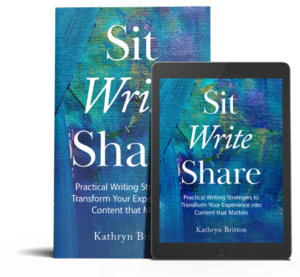In my writers’ workshops, I keep coming up against the same problem. Participants apologize that they have nothing to submit this time. Some mention staring at a screen and having their minds go blank. All have succeeded at writing before, but they can’t get past writer’s block now.
In Sit Write Share, Write Experiment 10 suggests writing about not being able to write. In a recent writers’ workshop, two people had interesting results with a variation on this approach.
I suggested, “Just write what’s on your mind. Don’t think about where to publish it. Don’t think about whether it meets a particular goal. Just let the words flow and see what emerges.”
In one case, the author wrote three paragraphs totaling about 370 words. In my opinion the piece was not publishable because it followed a meandering path and omitted many details that the author knows but the reader does not. However, it included three story seeds and two important concepts that could each be developed further, probably in separate blog posts. The author was writing about life events that could have been painful to describe, but instead she loved seeing herself becoming a storyteller.
In case you are wondering, story seed is my term for a few words that bring a particular story to your own mind. It won’t become a full-blown story until you’ve taken the idea in your head and written down words that make it come alive in someone else’s head.
In the other case, an author took a concept that is important to her and created an outline of an article she could write about it. She didn’t worry about complete sentences or being eloquent or supporting her points. She just created a structure that she could pick up in another session.
Story seeds. Concepts. Structure. These are all components of good writing. They just don’t necessarily all come at the same time.
Photo by Wilhelm Gunkel on Unsplash

